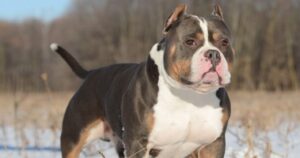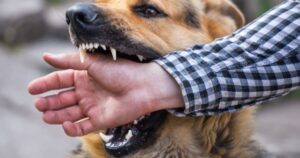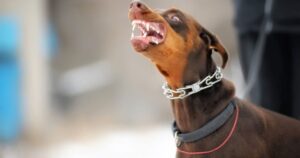The French Bulldog Colors refer to the various coat shades and patterns found in French Bulldogs. These can include solid colors like fawn, brindle, cream, or pied, which is a mix of white with another color. The breed standard recognizes a range of hues, creating a diverse and charming palette for these popular and affectionate dogs.
We Define into the world of French Bulldog Colors and DNA, unraveling the mysteries of their crazy genetics. Discover how genes play a vibrant role in shaping their coat hues, from the playful fawns to the intricate brindles. Get ready for a journey where science meets adorable aesthetics.
We fascinating realm of French Bulldog Colors and DNA, delving into the intricacies of their unique and quirky genetics. Unravel the science behind their charming coat variations, from solid fawns to captivating brindles. Gain a deeper understanding of the crazy genetics that make each French Bulldog a delightful and genetically diverse companion.
French Bulldogs come in many different colors and patterns.
Here’s the information presented in a table format
| Color Type | Description |
| Pied | White with patches of another color |
| Ticked | Tiny spots of color scattered across the coat |
| Irish or Blanket Pied | Pied pattern with only one copy of the pied gene |
| Brindle | Fawn and dark stripes creating a striped pattern |
| Fawn/Sable | Solid tan or cream color |
| Blue | Solid grayish-blue |
| Lilac | Diluted chocolate color |
| Chocolate | Solid brown |
| Rojo | Reddish hue |
| Isabella, New Shade | Unique shade within the lilac category |
| Cream | Pale shade similar to fawn but lighter |
| Platinum (lilac covered in cream) | Lilac coat covered in cream |
| Merle | Patches of color on a lighter background |
| Tan Points | Dark markings on specific areas |
Colors and Hair Lengths Not Covered:
- Urajiro – they don’t know what makes it
- Pink
- Husky
- Koi
- Fluffy
- Velvet
- Hairless
- Curly
- Rough
Do you know the colors and patterns of French bulldogs?
Pied or Piebald

The refers to a charming coat pattern in dogs, including French Bulldogs. In this unique design, the coat is predominantly white with distinct patches of another color, creating a visually striking contrast. The piebald pattern adds a touch of individuality to each dog, making them easily recognizable and often admired for their distinctive and eye-catching appearance. Whether the patches are large or small, Pied French Bulldogs showcase a delightful blend of colors that contributes to their overall charm and appeal.
Brindle

The is a distinctive coat pattern found in dogs, including the beloved French Bulldog. In this pattern, the base color of the coat is overlaid with dark stripes, creating a unique and visually appealing tiger-stripe effect. The stripes can vary in intensity, and the combination of the base color and dark stripes results in a striking and individualized appearance. Brindle French Bulldogs showcase a captivating mix of colors that contributes to their charm and character, making them stand out in the canine world.
Fawn/Sable
The describes a beautiful and common coat color in French Bulldogs. Fawn refers to a solid tan or cream color that can vary in shades, while Sable involves a blending of fawn with black-tipped hairs, creating a subtle and charming overlay. This combination results in a coat that exhibits warmth and richness. Fawn/Sable French Bulldogs showcase a lovely fusion of light and dark tones, giving them a distinctive and appealing appearance. Their elegant coloring adds to their overall charm and makes them popular and beloved companions.
Blue – Dilute
The refers to a unique coat color in French Bulldogs. The term “Blue” signifies a solid grayish-blue hue, and the addition of “Dilute” indicates a diluted or lighter version of the traditional black color. This results in a striking and cool-toned blue coat that can range from light to deeper shades. Blue French Bulldogs, with their diluted coloring, exhibit a distinctive and eye-catching appearance, making them stand out among their counterparts. This attractive color variation adds to the breed’s allure and popularity as beloved companions.
Chocolate or Coco
The describes a rich and delectable coat color found in French Bulldogs. This variation features a solid brown hue, resembling the color of chocolate. Sometimes referred to as “Coco,” this coat color adds a touch of warmth and sweetness to the dog’s appearance. French Bulldogs with a Chocolate or Coco coat showcase a unique and indulgent coloring that sets them apart, contributing to their charm and making them a favorite among those who appreciate the diversity of colors in this delightful breed.
Rojo – Testable Chocolate
The refers to a unique and intriguing coat color in French Bulldogs. “Rojo” is a term that translates to “red” in Spanish, suggesting a reddish hue in the coat. The addition of “Testable Chocolate” indicates the potential presence of the chocolate gene. This combination results in a coat color that may exhibit both red tones and the richness of chocolate. French Bulldogs with Rojo – Testable Chocolate coloring present a captivating blend of warm and luxurious hues, adding to their distinctiveness and making them a visually appealing and sought-after variation within the breed.
Lilac
The is a captivating coat color found in French Bulldogs. This unique hue is a diluted version of chocolate, resulting in a soft and muted shade that often appears in a pale lavender or silver-gray tone. Lilac French Bulldogs showcase a subtle and elegant coloring that sets them apart. This distinctive coat color, often accompanied by striking blue eyes, contributes to the breed’s charm and popularity among dog enthusiasts. Lilac French Bulldogs are prized for their rarity and the delightful pastel tones that grace their coats, making them a cherished and unique addition to the breed.
Isabella
The is a distinctive and rare coat color found in French Bulldogs. This unique shade is a variation of the lilac color, characterized by a dilute form of the chocolate gene. Isabella French Bulldogs typically exhibit a soft and muted fawn or pale lavender coloring, often accompanied by blue eyes. The name “Isabella” is used to describe this specific and enchanting hue, adding to the allure of these dogs. French Bulldogs with Isabella coloring are highly sought after for their uncommon and visually stunning appearance, making them stand out as exquisite and cherished companions.
Cream
The is a lovely and light coat color found in French Bulldogs. This hue is a pale shade similar to fawn but with an even lighter tone. French Bulldogs with a cream-colored coat showcase a soft and elegant appearance, often accompanied by a white mask. The cream coloring adds a touch of warmth and charm to the dog’s overall look. This variation is well-regarded for its gentle and pleasing aesthetic, making Cream French Bulldogs popular among those who appreciate the diversity of colors within the breed.
Platinum
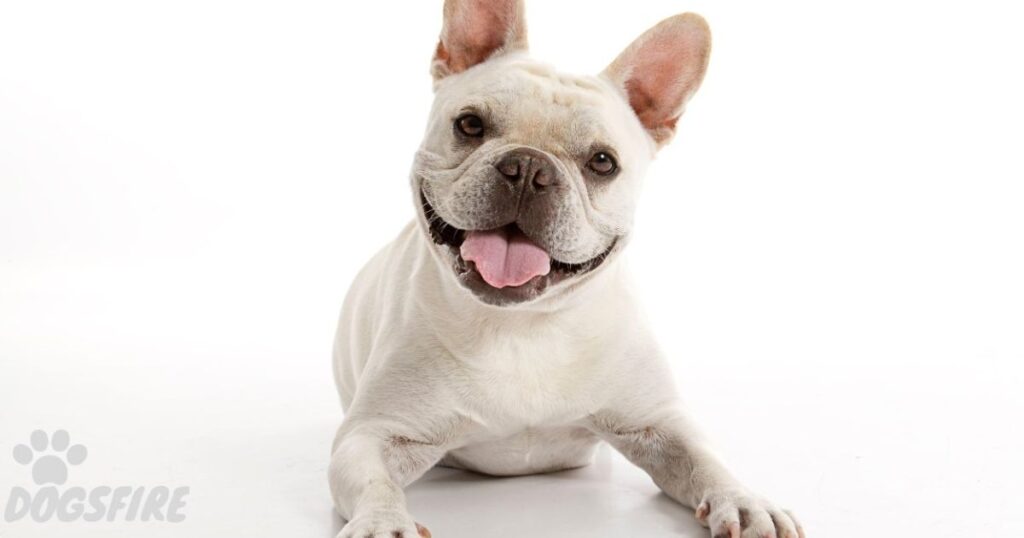
In the context of French Bulldogs refers to a unique coat color that combines lilac and cream. This distinctive coloring results in a dog with a light, silvery-gray coat that is both striking and elegant. The lilac coat, which is a diluted form of chocolate, is covered in cream, creating the Platinum effect. French Bulldogs with Platinum coloring showcase a rare and captivating appearance, often characterized by a blend of soft hues. The Platinum variation adds to the breed’s diversity and is appreciated for its beauty and individuality, making these dogs stand out as exquisite and sought-after companions.
Tan Color or Tan Point
The term Tan Color or Tan Point in French Bulldogs refers to a specific pattern of coloration. Tan points are darker markings typically found on specific areas of the dog’s coat, including above the eyes, on the sides of the muzzle, on the chest, and on the lower part of the legs. These areas display a darker shade, often in black or a deep brown, creating a distinctive contrast with the dog’s primary coat color. French Bulldogs with tan points exhibit a unique and eye-catching pattern that adds to the overall charm and character of the breed, showcasing a delightful blend of colors.
Merle
The is a striking coat pattern found in French Bulldogs. This distinctive genetic trait results in a mottled or splotchy pattern with irregularly shaped patches of color on a lighter background. The patches can be in various shades, creating a captivating and unique appearance. Merle French Bulldogs often have a speckled or marbled coat, and the pattern can occur in a variety of colors, including blue merle, chocolate merle, and others. The Merle pattern adds an extra layer of charm and individuality to the breed, making these dogs stand out with their visually appealing and distinctive coat markings.
Do you know the color and pattern panels and DNA?
The Understanding impact of genetic panels on color and pattern allows you to align breeding decisions with your program’s goals. For those interested in trendy colors, it’s advisable to steer clear of fawn and brindle, while some upscale breeders may avoid pied – although we appreciate pied French Bulldogs, which can exhibit a diverse array of colors. In our explanation, we delve into each locus’s role, the colors it produces, and its dominance, providing valuable insights for breeders.
A locus – fawn, sable, tri color
The “A locus” in French Bulldogs influences coat colors, including fawn, sable, and tri-color variations. Fawn coats are characterized by a solid tan or cream color, while sable involves a blending of fawn with black-tipped hairs, creating a subtle overlay. Tri-color coats typically combine black, fawn, and white markings, resulting in a visually striking pattern. The A locus plays a crucial role in determining these color variations, contributing to the breed’s diverse and appealing coat palette.
French Bulldogs with fawn, sable, or tri-color coats showcase the influence of the A locus, providing a range of aesthetically pleasing options for dog enthusiasts. Whether it’s the warm and solid tones of fawn, the subtle blending in sable, or the bold contrast in tri-color, each variation adds to the unique charm of French Bulldogs, making them a beloved and visually captivating breed.
The “ay” Allele
The “ay” allele in French Bulldogs is associated with a specific coat color variation. This allele influences the expression of fawn and sable coats, contributing to the breed’s diverse color palette. Dogs with the “ay” allele typically exhibit warm and solid tan or cream colors in fawn coats or a blending of fawn with black-tipped hairs in sable coats. The “ay” allele plays a significant role in shaping the visual appeal of French Bulldogs, adding to the individuality and charm of these beloved dogs.
The “aw” Allele
The “aw” allele in French Bulldogs is another genetic factor that influences coat color. This allele contributes to the production of wild sable and brindle coats. Wild sable coats typically feature a mix of tan or cream with black-tipped hairs, creating a natural and rustic appearance. On the other hand, brindle coats display a distinct pattern of dark stripes on a lighter background. The “aw” allele adds to the genetic complexity of French Bulldog coat variations, playing a crucial role in shaping the breed’s diverse and visually appealing color combinations.
The “at” Allele
The “at” allele in French Bulldogs is a genetic element that influences coat color patterns. This allele is associated with the creation of a tricolor coat, where the dog displays a combination of black, fawn, and white markings. The “at” allele contributes to the distinct and visually striking appearance of tricolor French Bulldogs. This genetic factor plays a significant role in determining the unique coat variations within the breed, showcasing the diversity and charm of French Bulldog colors.
The “a” Allele – Solid
The “a” allele in French Bulldogs is linked to a solid coat color. When a French Bulldog carries the “a” allele, it results in a solid-colored coat without any specific patterns or markings. This allele influences variations such as solid fawn, cream, or black coats. The “a” allele contributes to the simplicity and elegance of French Bulldogs with solid-colored coats, showcasing a clean and uniform appearance. This genetic factor plays a crucial role in shaping the breed’s aesthetics, offering a range of appealing options for those who appreciate a classic and straightforward coat color in these beloved dogs.
Co locus – Chocolate, “untestable”
The “Co” locus in French Bulldogs is associated with the chocolate coat color. When this locus is present, it results in a coat that displays a rich and deep brown hue known as chocolate. Additionally, the term “untestable” may refer to situations where the chocolate gene is not easily identified through standard testing methods. The Co locus plays a key role in determining the captivating chocolate coat color in French Bulldogs, adding to the breed’s genetic diversity and contributing to the unique charm of these dogs.
K locus – Dominant Black, Brindle
The “K locus” in French Bulldogs influences coat color, with dominant black and brindle being notable variations. Dominant black results in a solid black coat, while brindle introduces dark stripes on a lighter background. The K locus is a crucial genetic factor shaping the striking black and brindle patterns in French Bulldogs, contributing to the breed’s captivating and diverse appearance.
The “kb” Allele
The “kb” allele in French Bulldogs is associated with the brindle coat pattern. When a French Bulldog carries the “kb” allele, it influences the expression of dark stripes on a lighter background, creating the distinctive brindle pattern. This genetic factor adds to the breed’s diversity, contributing to the visually striking appearance of French Bulldogs with brindle coats. The “kb” allele plays a key role in shaping the unique and charming coat variations within the breed, showcasing the intricate and appealing patterns of brindle French Bulldogs.
The “kbr” Allele
The “kbr” allele in French Bulldogs is another genetic element related to the brindle coat pattern. When present, the “kbr” allele influences the expression of dark stripes on a lighter background, contributing to the intricate brindle pattern. This genetic factor adds to the complexity of coat variations within the breed, allowing for a diverse range of brindle patterns. French Bulldogs with the “kbr” allele showcase the distinctive and captivating appearance associated with the brindle coat, making them stand out in terms of both genetic diversity and visual charm.
The “ky” Allele
The “ky” allele in French Bulldogs is associated with the solid black coat color. When a French Bulldog carries the “ky” allele, it results in a uniform and solid black coat without the brindle pattern. This genetic factor plays a key role in determining the sleek and elegant appearance of French Bulldogs with solid black coats. The “ky” allele contributes to the breed’s diversity, providing another option for those who appreciate the classic and sophisticated look of a solid black coat in these beloved dogs.
D locus – Blue
The “D locus” in French Bulldogs is linked to the blue coat color. When the D locus is present, it results in a solid grayish-blue hue, commonly referred to as blue. This genetic factor contributes to the striking and cool-toned appearance of French Bulldogs with blue coats. The D locus plays a significant role in shaping the breed’s color variations, offering a visually appealing and sought-after option for those who appreciate the unique charm of blue-colored French Bulldogs.
E locus – Mask, recessive red/yellow/cream
The “E locus” in French Bulldogs is associated with coat color patterns, particularly the presence of a mask and the expression of recessive red, yellow, or cream colors. The E locus influences the formation of a mask, often darker in color, on the dog’s face. Additionally, it can result in recessive red, yellow, or cream coat colors. This genetic factor adds to the breed’s diversity, allowing for variations in facial markings and a range of warm-toned coat colors. The E locus plays a crucial role in shaping the distinctive and aesthetically pleasing features of French Bulldogs, contributing to their individual charm and appeal.
S locus – Pied, spotting
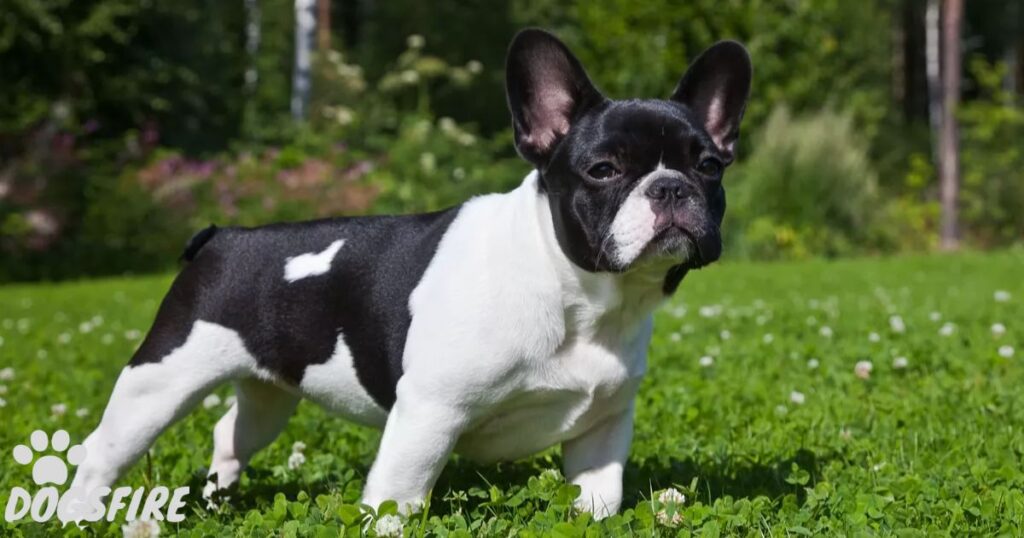
The “S locus” in French Bulldogs is linked to coat patterns, specifically pied and spotting. When the S locus is present, it can result in a pied coat, characterized by patches of color on a predominantly white background. This genetic factor also influences spotting, determining the distribution of color on the coat. The S locus adds to the breed’s visual diversity, allowing for French Bulldogs to display a unique combination of colors and patterns. The presence of the S locus contributes to the captivating appearance of French Bulldogs with pied and spotted coats, making them stand out in terms of their individual and charming markings.
M locus- Merle
The “M locus” in French Bulldogs is associated with the merle coat pattern. When the M locus is present, it results in a distinctive coat with patches or swirls of diluted color on a lighter background. Merle French Bulldogs exhibit a marbled or speckled appearance, creating a visually striking and unique pattern. The M locus plays a significant role in shaping the breed’s diverse and captivating coat variations, offering a visually appealing option for those who appreciate the beauty of the merle coat in these beloved dogs.
Intensity (Intensive) Dilution

Intensity Dilution, also known as Intensive Dilution, is a genetic factor in French Bulldogs that affects the vibrancy and depth of coat color. This dilution occurs when the intensity gene is present, resulting in a lightening or dilution of the base color. The degree of dilution can vary, producing softer and lighter shades of the original color. Intensity Dilution influences the overall appearance of the coat, contributing to the diverse color palette seen in French Bulldogs and adding an extra layer of complexity to their unique and charming coat variations.
FAQ, s
What colour genetics are French Bulldogs?
French Bulldogs exhibit diverse color genetics, including pied, brindle, fawn, blue, lilac, chocolate, and more.
What DNA makes a blue Frenchie?
The blue color in a French Bulldog is determined by the presence of the “d” (dilution) gene in their DNA.
What is KB in French Bulldog DNA?
In French Bulldog DNA, “KB” refers to the brindle allele, influencing the brindle coat pattern.
What colour is testable in French Bulldogs?
Chocolate is a testable color in French Bulldogs, as it can be identified through genetic testing.
What is the rare color of Frenchie?
The rare color of French Bulldogs can include Isabella, a unique shade within the lilac category.
Conclusion
The delving into the world of French Bulldog colors and DNA reveals a fascinating journey through the intricacies of their genetics. Understanding these crazy genetics not only sheds light on the diverse palette of coat colors but also emphasizes the role DNA plays in shaping the charming and unique appearances of these beloved dogs.
Whether exploring the pied patterns, the mesmerizing lilac hues, or the intricate merle coats, each color variation tells a story written in the French Bulldog’s genetic code, making them not just pets but living canvases of genetic artistry that captivate and delight dog enthusiasts worldwide.



